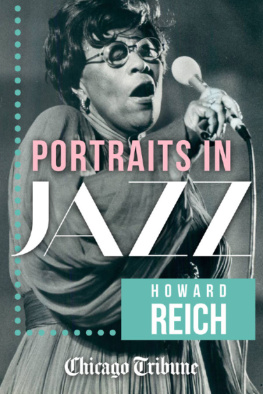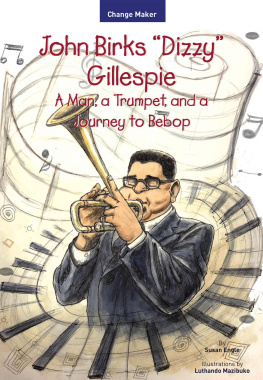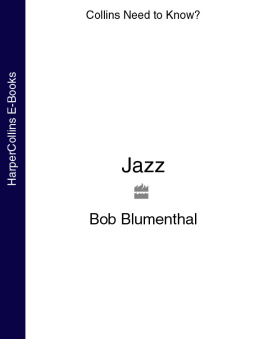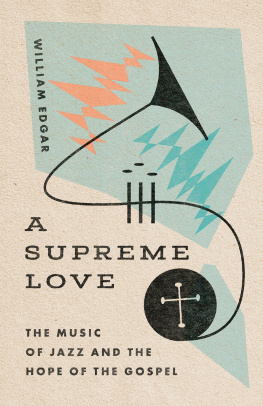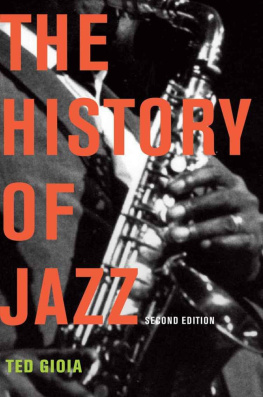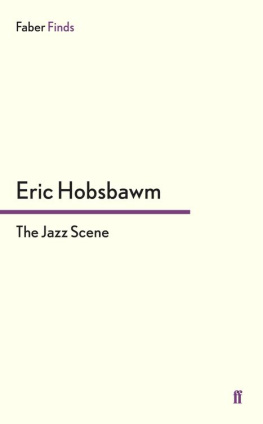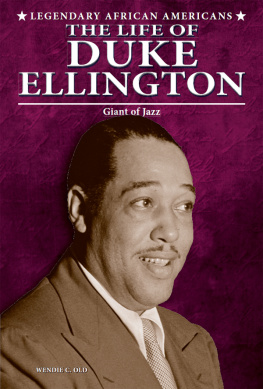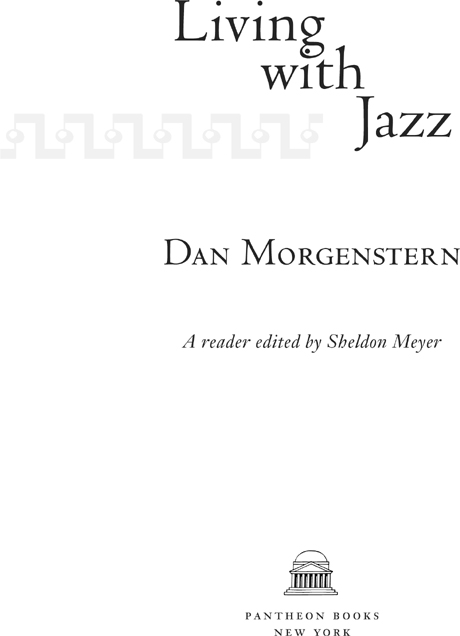Foreword
D an Morgenstern has been a major figure on the jazz scene for more than four decades. During the 1960s and into the 1970s, he was the editor of Down Beat, then the premier jazz magazine. His comments, criticisms, reviews of records, and reports on live jazz activities were central to the discussion of jazz at the time. Since 1976, he has been the director of the Institute of Jazz Studies at Rutgers University, Newark, New Jersey, which he has made the central repository of jazz archives and research in the world. With his wide experience and knowledge, he has advised and directed a generation of jazz scholars and broadened the discussion and range of the discipline.
I have known and respected Dan Morgenstern throughout my career as a book editor at Oxford University Press and have long been eager to publish a book by him. Indeed, Dan and I have talked about doing so on many occasions, but his busy schedule never enabled us to pull something together until now. Fortunately, Robert Gottlieb, another editor who loves jazz, was able to find a way. Gottlieb suggested that a book be published that brought Morgensterns significant writings into one volume, and since he knew I had recently retired as a full-time editor, he asked if I could help Dan put the definitive collection of his work together. Both Dan and I jumped at the chance to collaborate on this important project. So began one of the happiest experiences of my working life.
Dan Morgenstern is perhaps the only significant jazz critic whose writings have not been readily available in book form, which is why this definitive, substantial collection represents an important jazz event.
We started our collaboration with Dan sending me photocopies of all of his writings. We then indulged in a friendly debate about which pieces should be included and which left out. Then we realized that we needed to create a framework for the book. Mere chronology would not work, so we divided the book into a number of categories that would bring subjects together and provide a proper context for Morgensterns essays. Our editorial work then developed in this context.
In the charming memoir Reminiscing in Tempo, which opens this volume, Dan describes his early years, first in Vienna and then, when he and his mother were forced to flee because of the Nazi takeover, in Denmark and later in Sweden. The main source of music for him in his childhood was the phonograph, through which he was introduced to jazz. Except for occasional live encounters in Copenhagen (mainly with Fats Waller and Django Reinhardt), he developed his passion for the music through records. In Vienna, at age six, though, he had his richest early music experience when one of his fathers closest friends, the great composer Alban Berg, presented him with a recording of Mozarts Eine Kleine Nachtmusik. Throughout his life, jazz has always been part of a wider musical horizon.
Morgenstern begins by bearing testimony to the great figures in jazz history. He bestows his greatest love and attention on Louis Armstrong, jazzs greatest figure. No one has written about Armstrong with greater understanding and brilliance. For him, Armstrong spread love, happiness, and beauty, and Morgenstern stresses the prodigious quality of effort and energy that he put into his lifes work. He speaks of Armstrong as the spirit incarnate of the music he did so much to create. His trumpet produced a golden sound, unlike any other coaxed from the instrument. Armstrong is the old master, making each phrase a gem, distilling the essence of his music, bringing each melodic contour out in relief.
Morgenstern himself has had a profound effect upon the way Armstrong is perceived today. The traditional view of Armstrongs career acknowledged him as the first major voice of jazz in the 1920s, as revealed by his revolutionary series of Hot Five and Hot Seven recordings. But in the 1930s and 1940s, when Armstrong fronted a big band, critics felt that his playing became repetitive and formulaic, and they condemned him for striving for commercial success. In a liner note for the reissue of Armstrongs early 1930s big-band recordingsentitled VSOP (Very Special Old Phonography)Morgenstern effectively demolishes these clichs about Armstrong. He decisively demonstrates how Armstrongs playing with his big band revealed the way his mastery of his instrument and musical imagination continued to grow. What we encounter here is jazzs first and greatest virtuoso and master improviser in the process of flowering and self-discovery. Morgenstern points out how his playing on these records is unparalleled he executes some of the most fantastic instrumental passages. In some instances it is sheer bravura playing, but, as Morgenstern points out, wasnt this what great virtuosos in music always showed? In these solos Armstrongs sense of form and proportion are infallible. In fact, Morgenstern turns most jazz criticism on its headfor jazz critics, small-group music is usually preferable to that of big bandsby declaring that a big band was the best backdrop for Armstrongs trumpet in this period: A full band, with appropriate arrangements especially designed for the purpose, set off his playing and singing more dramatically than a small group ever could have.
Morgensterns other telling insight into Armstrongs greatness focused on the fact that, in approaching Armstrong, one has to embrace the man in all the fullness of his beingnot only in his incomparable trumpet playing and singing but also in his writing (as Morgenstern demonstrates in his perceptive introduction to Armstrongs memoir Satchmo: My Life in New Orleans), his great ability to communicate with an audience, and his overwhelming wish to please and entertain. Morgenstern vehemently derides the fallacy that Louis had sold his birthright of authentic blues and stomps for Tin Pan Alley pottage (just because he began playing the Great American Songbook). And, finally, Armstrong, in his actions and his playing, refused to recognize the dichotomy between art and entertainment that has plagued jazz since its early days. For Armstrong, there was no such dichotomy. As he said, I dont think musicians should type themselves. And he certainly never did.
There is a knowing and insightful portrait of Duke Ellington, jazzs other central figure. Morgenstern brilliantly assesses Ellingtons recording career from the later 1920s to the mid-1940s. Especially valuable are his perceptive reviews of two 1960s Ellington LPsThe Far East Suite and And His Mother Called Him Bill (a memorial to his great collaborator, Billy Strayhorn)in which he captures the unique qualities of Ellington at his best.
In the Profiles and Portraits that follow, he brings to life a whole range of major jazz performers. No one has so imaginatively defined the greatly influential tenor player Lester Young. Lester was a dancer, a dreamer, a master of time and its secrets. Foremost among them was equilibrium. He never stumbled on the tightrope of swing. He is a juggler, a high-wire artist without a net, a diver, a gambler, a gamboler. And his characterization of the incomparable Miles Davis as an innovator has the ring of truth. In todays world, there are many seekers of new ways. Often the searches seem forced, and the results not natural. Miles Davis, however, has that rare gift of being able to give birth and life to new ways which, no matter how startling, always seem natural and logical, and open new roads for others to travel after he has moved on.


